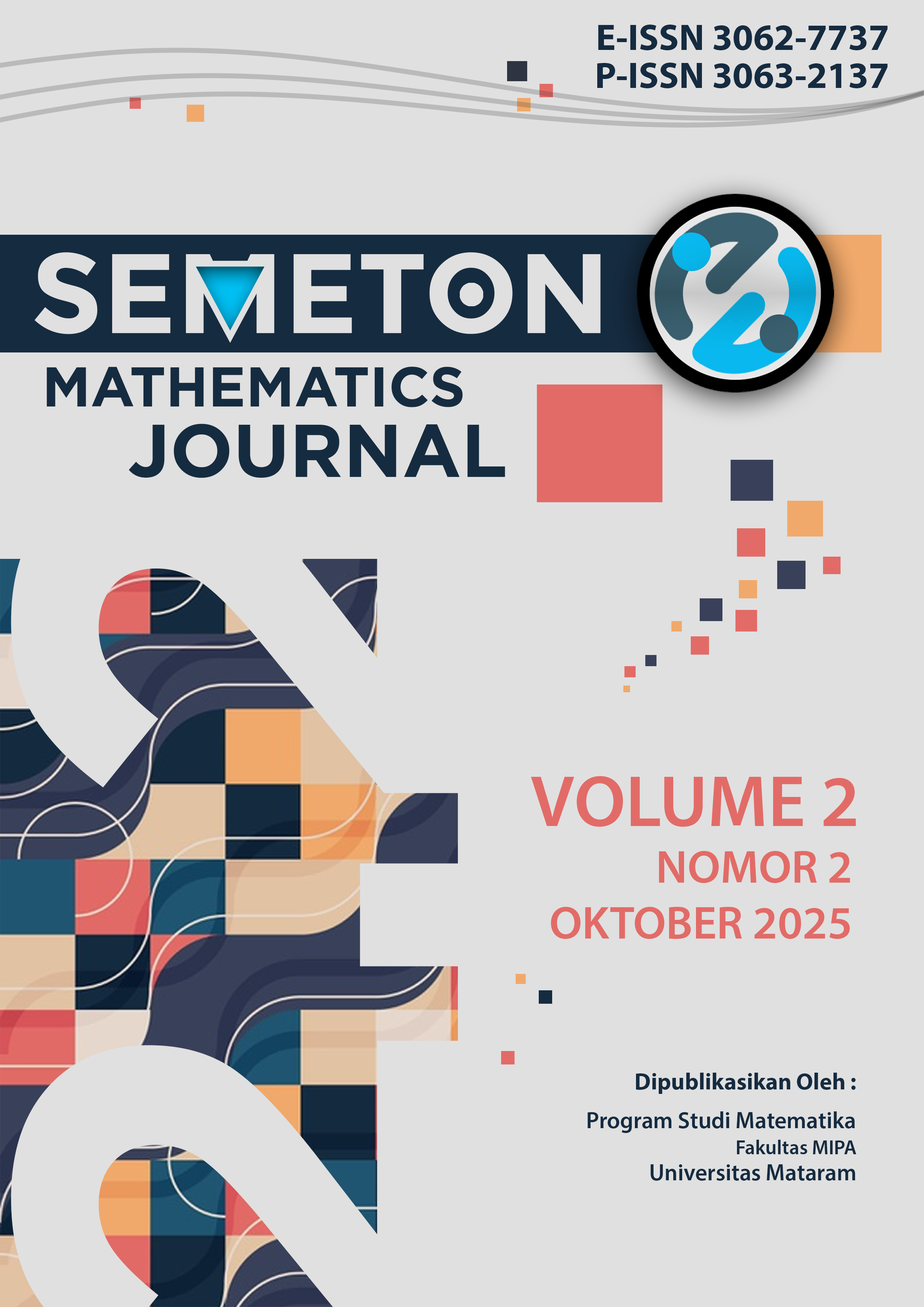Application of Google Earth Engine for Agriculture Drought Monitoring in East Lombok
DOI:
https://doi.org/10.29303/semeton.v2i2.319Keywords:
Drought, Google Earth Engine, NDVI, NDWI, NDDIAbstract
In tropical regions such as East Lombok Regency, where food production is highly dependent on rainfall, drought poses a major threat to the agricultural sector. This study aims to monitor drought patterns over time using Google Earth Engine (GEE). Vegetation indices, including the Normalized Difference Vegetation Index (NDVI), Normalized Difference Water Index (NDWI), and Normalized Difference Drought Index (NDDI), were derived from Landsat 8 satellite imagery. The analysis revealed that during the dry season, particularly in August and September, the southern region—especially Jerowaru Sub-district—experienced severe drought conditions. The western parts, including Sambelia, Pringgabaya, and Suela Sub-districts, were also significantly affected, with the most impacted areas being rain-fed rice fields, corn plantations, and mixed horticultural crops. Temporal trend analysis indicated an increasing drought intensity in the later years of observation. The resulting information can support decision-making in drought risk mitigation and sustainable water resource management. By integrating satellite-based drought assessment with agricultural planning, this approach can strengthen food security and promote adaptive agricultural practices in drought-prone regions such as East Lombok Regency.References
J. Du, Y. Wang, and Y. Zhang, “Drought assessment using the Normalized Difference Drought Index,” Journal of Hydrology, vol. 558, no. 1, pp. 1–10, 2018, https://doi.org/10.1016/j.jhydrol.2018.01.013.
N. Ejaz, J. Bahrawi, K. M. Alghamdi, K. U. Rahman, and S. D. Shang, “Drought monitoring using Landsat derived indices and Google Earth engine platform: A case study from Al-Lith Watershed in the Kingdom of Saudi Arabia,” Remote Sensing, vol. 15, no. 984, 2023, https://doi.org/10.3390/rs15040984.
C. Funk, P. Peterson, and M. Landsfeld, “A Global Satellite-Based Assessment of Climate Variability and Change on Agricultural Drought in Sub-Saharan Africa: Implications for Food Security and Policy Planning in the Region,” Global Environmental Change, vol. 30, no. 1, pp. 103–114, 2015.
N. Gorelick, M. Hancher, M. Dixon, D. Ilyushchenko, D. Thau, and R. Moore, “Google Earth Engine: Planetary-scale geospatial analysis for everyone,” Remote Sensing of Environment, vol. 202, pp. 18–27, 2017, https://doi.org/10.1016/j.rse.2017.06.031.
M. Kilic, H. Gunalan, and R. Gundogan, “Drought Monitoring on Google Earth Engine with Remote Sensing: A Case Study of Şanlıurfa Province in Turkey,” Remote Sensing Applications: Society and Environment, vol. 23, 2022. https://www.ljoas.com/Makaleler/239cae89-0a9a-43d6-9927-7e703ec30964.pdf
L. Kumar and O. Mutanga, “The role of Google Earth Engine in monitoring vegetation dynamics and drought conditions in agricultural regions: A review,” Remote Sensing Applications: Society and Environment, vol. 12, no. 3, p. 100319, 2018.
O. Mutanga and L. Kumar, “The role of Google Earth Engine in monitoring vegetation dynamics,” Remote Sensing of Environment, vol. 232, p. 111267, 2019, https://doi.org/10.1016/j.rse.2019.111267.
D. Rismayatika and A. Rahman, “Utilization of Top of Atmosphere data for drought index calculation,” Journal of Remote Sensing, vol. 12, no. 3, pp. 450–465, 2020.
A. Renza and D. D. P. Pratiwi, “Classification of drought levels based on NDDI values,” 2010.
M. K. Rosyidy and A. R. A. Fariesta, “Aplikasi Google Earth Engine untuk Pemantauan Kekeringan Pertanian di Kabupaten Lombok Tengah,”
N. Sazib, I. Mladenova, and J. Bolten, “Leveraging the Google Earth Engine for drought assessment using global soil moisture data: A case study from Bangladesh and India using MODIS data products and machine learning algorithms for drought monitoring and prediction in agricultural regions of South Asia,” Remote Sensing, vol. 10, p. 1265, 2018, https://doi.org/10.3390/rs10081265.
G. Stancalie and C. Munteanu, “Normalized Difference Drought Index (NDDI) for drought assessment,” Agricultural and Forest Meteorology, vol. 197, pp. 1–8, 2014.
M. Tamiminia and L. Kumar, “Google Earth Engine: A powerful tool for remote sensing applications,” Remote Sensing Applications: Society and Environment, vol. 18, p. 100319, 2020, https://doi.org/10.1016/j.rsase.2020.100319.
P. Thilagaraj, P. Masilamani, R. Venkatesh, and J. Killivalavan, “Google Earth Engine Based Agricultural Drought Monitoring in Kodavanar Watershed: A Case Study in Tamil Nadu State of India,” ISPRS Annals of the Photogrammetry, Remote Sensing and Spatial Information Sciences, vol. IV-2/W4-2021, 2021.
UN-SPIDER, “Agriculture Drought Monitoring and Hazard Assessment using Google Earth Engine,” https://un-spider.org/advisory-support/recommended-practices/recommended-practice-agriculture-drought-monitoring/in-detail.
Downloads
Published
How to Cite
Issue
Section
License

This work is licensed under a Creative Commons Attribution-ShareAlike 4.0 International License.



